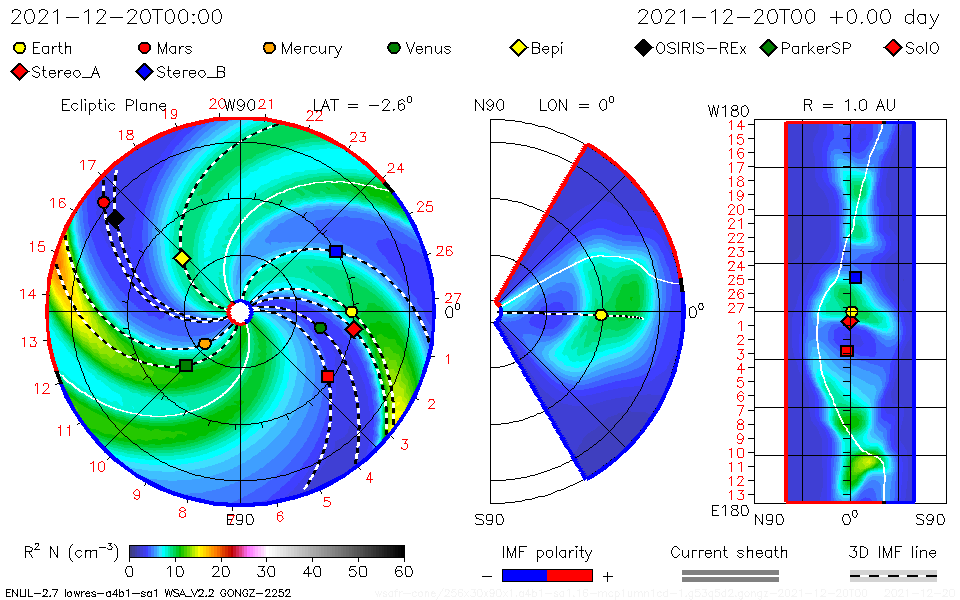
Aurora alert!
There’s been a small uptick in solar activity over the past two days (December 20 and 21, 2021). The increase comes from the fact that nine sunspot groups (active regions or AR) now pepper the visible face of the sun. Most solar flares – that is, storms on the sun – come from such regions. They often release streams of charged particles into space, called coronal mass ejections (CMEs). The CMEs take several days to travel across space to the Earth. When the solar charged particles in a CME strike Earth, they often cause beautiful displays of the aurora borealis and aurora australis (the northern and southern lights). These events also have the potential to affect power grids and satellites in Earth-orbit.
At this time, effects from the December 20, 2021 solar storm are expected to arrive at Earth around December 23.

Multiple M-class solar flares
Three M-class solar flares occurred with their peak x-ray intensities at 11:36 UTC on December 20, 7:50 UTC on December 21, and 11:44 UTC on December 21. The flare on December 20 came from AR12908. The other two M-flares came from a region that has not yet rotated into view on the east limb of the sun. Note that because the sun rises in the east for us, scientists label the limb of the sun that rotates into view, the left side, as east. All three flares produced radio blackouts for tens of minutes. In between these moderate-sized flares, lots of smaller C-class flares have been popping off.

Earth-directed CME
The flare on December 20 had a small-to-moderate CME associated with it. The forecast from NOAA’s Space Weather Prediction Center (SWPC) is for this CME to reach Earth around 21 UTC on December 23. NASA’s Moon to Mars Space Weather Office produced a model with a similar arrival time though slightly earlier of 16:28 UTC. This group has timing errors of roughly plus or minus 7 hours.

Possible auroras December 23
The prediction from SWPC is for the CME to give a glancing blow to Earth’s magnetic shield, aka our planet’s magnetosphere, possibly producing increased geomagnetic activity with a G-1 level storm.
This storm in Earth’s magnetosphere could create decent auroral activity on December 23, visible at the higher latitudes. Will the auroral activity extend down into the continential U.S.? We can’t answer that question at this time. Forecasts will be updated as we get closer to the CME’s expected arrival.
Bottom line: A solar storm has caused a stream of charged particles to be headed toward Earth. Aurora alert! Possible northern and southern lights December 23, 2021.
The post Aurora alert for December 23, after M-class flares first appeared on EarthSky.
0 Commentaires